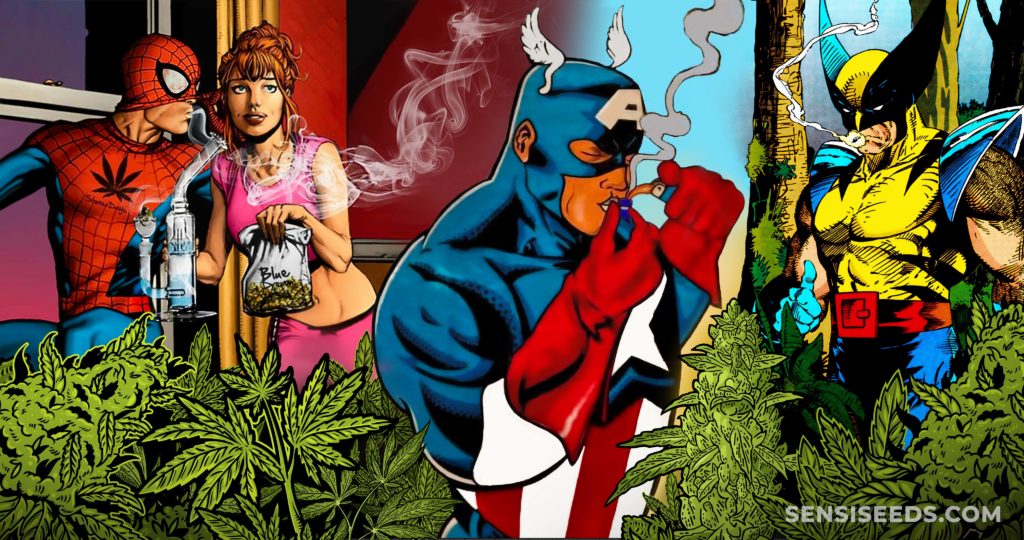Comic books have been keeping us entertained for centuries. From Popeye to Superman, these stories reflect the society we live in. However, if we have a closer look at some of their magic powers, we may see some recognisable substances. Could Popeye’s spinach be a substitute for cannabis? Or Superman’s kryptonite, a subtle reference to methamphetamines?
Since their conception at the end of the 19th century, comics have gone through a continuous evolution. Emerging in the USA around 1890, they were preceded by a long narrative and iconographic tradition in Europe and by considerable developments in illustration. This hybrid melange combining text and images got its name because, in their origin, comics and comic strips were supposed to be comical.
Over the years the universe of comics has adopted multiple forms: graphic comic strips, children’s stories, social critique. Later, these included many others such as animation, the underground comics of the 60s and, finally, comic books starring superheroes.
From the first publishing in the USA, comics became a means of expression for social classes, generations, and races. As a result, comics became a vehicle for ideologies, which turned them into fodder for many detractors among the dominant classes.
They were considered a source of destabilisation, disturbance, and even anti-patriotism, placed within reach of the youth and the more underprivileged sections of society. It was not long before comics became an object of persecution and a form of socio-political resistance.
The art of comics is more complex than appears at first sight. This is clear from their history and evolution. What started off as a simple Sunday comic strip became a means of artistic and narrative expression, spanning all possible genres and an infinite number of subjects.
Nothing escaped the scrutiny of their creators, authentic chroniclers of the social and political times in which they lived. Humour, drama, religion, violence, sex, politics and of course… drugs.
Comics and drugs
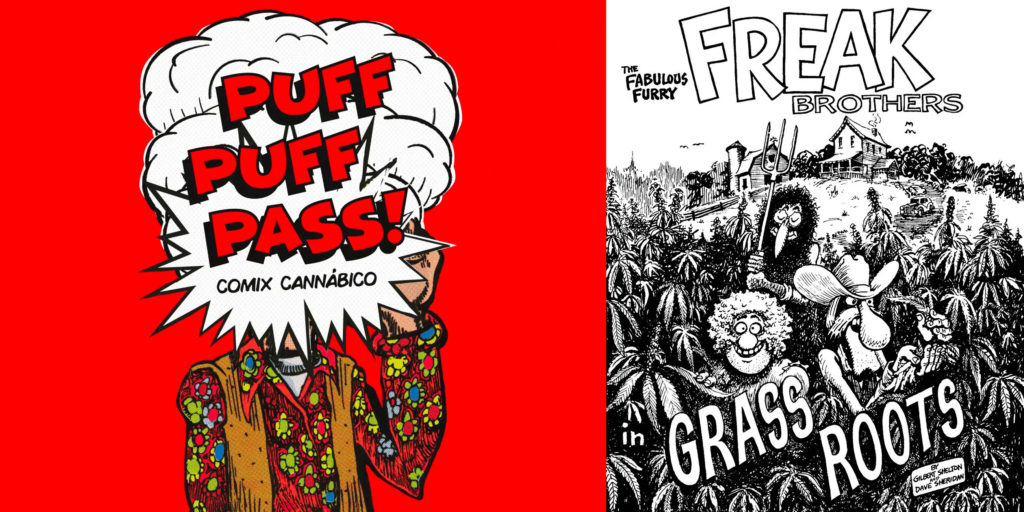
We are both referring here to legal substances such as alcohol and tobacco, and to mostly still illegal ones, such as psychoactive cannabis and psychotropic substances, opiates, and later, designer and synthetic drugs such as methamphetamine.
All these substances make an appearance over the course of the history of comics, either openly or covertly. In a great variety of stories, they are naturally intertwined with the characters, reflecting the historic, social, and cultural situation at the time of publication. Politicians, lobbies, and pressure groups have continually used comics in the fight against the use of drugs and to negatively portray their use in society.
Various cannabis cartoon characters were exhibited at Barcelona’s Hash, Marihuana & Hemp Museum. The exhibition “Puff Puff Pass!” celebrates the history of cannabis in comics and highlights some of the best-known illustrators and their cartoon’s “smoky” adventures.
By analysing some of the most well-known characters in the history of comics, we see a chronicle of the social and political zeitgeist of our recent past. We can also see a reflection of the progressive prohibitions introduced by the USA to restrict or eradicate the supply, demand, and consumption of drugs.
1. Popeye the sailor man
Popeye appeared for the first time as the star of a comic strip in 1929. Popeye has gone through many different writers, artists, and formats since he was first created by Elzie Crisler Segar.
Since his creation, Popeye the Sailor Man has been one of the world’s most well-known and beloved characters. Significantly, the original comic was far more complex than the short animated films and was full of adult humour.
Everyone knows Popeye’s love of spinach affords him superhuman strength. However, could this be a metaphor for another magical herb? The evidence is circumstantial, but when added together it presents a compelling picture. For many readers at least, Popeye’s strength-giving spinach is meant as a clear metaphor for the miraculous powers of cannabis.
According to Dana Larsen, a Canadian pro-legalisation activist, during the 20s and 30s the word “spinach” was street slang for cannabis. In the clubs where people would smoke it they used to play ‘The Spinach Song’, recorded by the popular jazz band Julia Lee and Her Boyfriends. Many people believe that in the song, spinach was adopted as an obvious metaphor for cannabis.
Popeye’s spinach
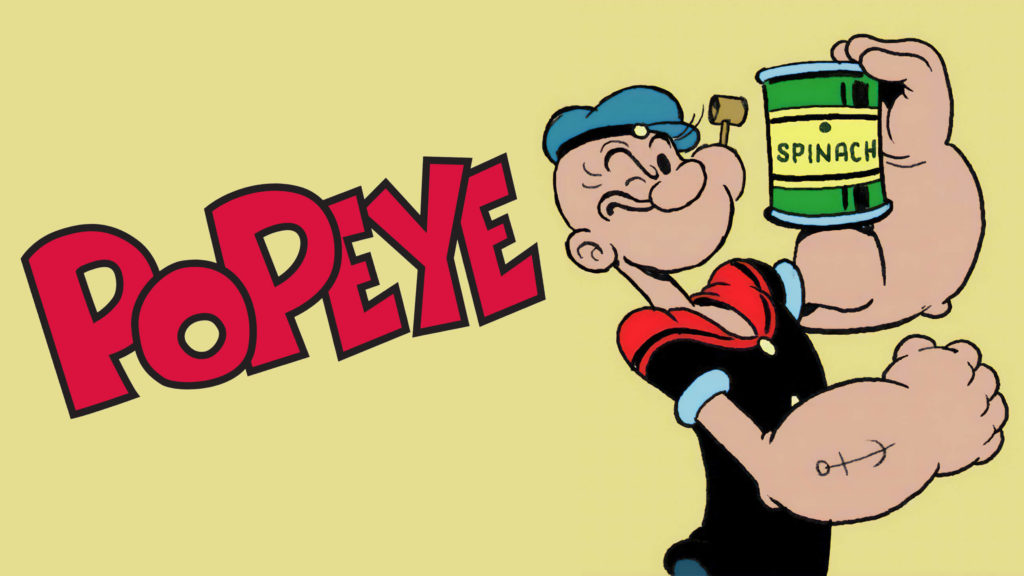
Upon analysing a strip from 1954 in which Popeye tells his nephews about his ancestor Hercules, and the scene in which he appears sniffing white garlic and eating spinach to gain more strength, Larsen considers that both foodstuffs are really metaphors for cocaine and marijuana. Notably, Hercules gives up white garlic to switch over to spinach.
In a number of 60s strips, Popeye sucks spinach through his pipe. Although it is more probable that the superhuman strength spinach gives Popeye is related to the coca leaf, there is also the fact that Popeye has a habit of spitting.
Cannabis propaganda warned of the dangers of cannabis use, describing how it produced superhuman strength. Press reports from the famous era of Reefer Madness proclaimed that cannabis users acquired extraordinary strength, making them almost immune to bullets. Therefore, it seems obvious that during this period Popeye’s impressive spinach-related strength would be linked to marijuana.
As a final point, Popeye has a dog called ‘Birdseed’. The writers who named the dog during this time, the hippy period par excellence, must surely have been aware that cannabis seed was commonly used to feed birds, before it was prohibited.
Sailors and cannabis
As a sailor, Popeye could be expected to know about exotic herbs from faraway places. In reality, sailors had a lot to do with the introduction of marijuana in Stateside culture and across the world, bringing back cannabis from their voyages. Of course, we mustn’t forget either that hemp was used for centuries to make sails for boats, ropes, maps, logbooks, Bibles and of course, as paint and lamp oil.
There have been many interpretations of the Popeye comic strip, some of which are far removed from what its authors intended. However, they give us a good idea of the iconic status that Popeye has attained among parts of the cannabis community.
Superheroes and villains
In the mid-30s, small companies emerged such as All Star Comics, Action Comics, and Detective Comics. The quality of the comic stories became better, and writers and cartoonists acquired a characteristic style, which is now known as ‘American’. So emerged stories about scientists, detectives, and attractive characters with superior abilities, who went about saving the planet or their community from impending major catastrophes.
However, at the start of the 20th century a moralist wave of social and legal reform occurred in the USA against such vices. This erupted into a global crusade to eradicate drugs. The prohibition of drugs in the USA occurred in 1906, when American lawmakers approved a first law, the Pure Food and Drug Act, aimed at controlling the sale of cocaine which was increasingly being abused. A little later the Opium Exclusion Act entered into force in 1909, followed by the Harrison Narcotics Tax Act in 1914.
These legislative changes caused a huge price rise on all these substances. This then benefited illegal trafficking. In the 1930s the company DuPont launched a PR campaign against hemp. In his book The Emperor Wears No Clothes, Jack Herer claims that the sole aim of the campaign was to vilify and prohibit its culture and cultivation. This was evidently used to promote the use of nylon in the textile industry. This campaign reaped its rewards when in 1937 the Marijuana Tax Act was approved, which effectively criminalised cannabis users.
The ‘new drugs’
The 19th century saw the birth of the ‘new drugs’, including morphine (1806), cocaine (1860), heroin (1883) and barbiturates (1903). At the time, using small quantities of such substances including cannabis, often daily, was legal and fairly common.
2. Superman
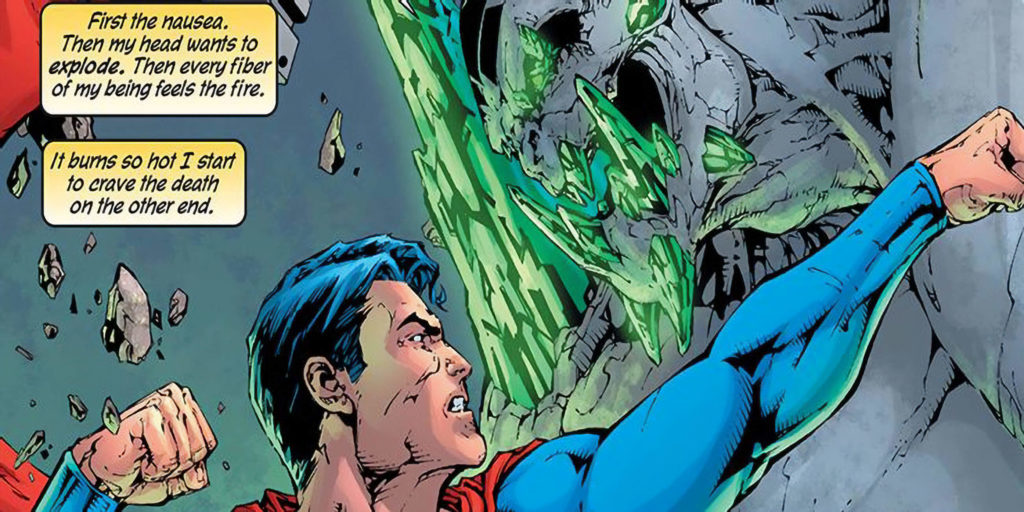
Now to turn to the superhero par excellence, Superman, who, as previously mentioned, made his first appearance in 1938. He was penned by the American writer Jerry Siegel and the Canadian artist Joe Shuster. Superman is a fictional character reminiscent of the heroes of traditional mythology, who cures the ills of society, fighting against tyranny and for social justice.
Also known as the Man of Steel, his superpowers come from his place of origin: the planet Krypton. Despite his superpowers, Superman has an Achilles’ heel. He is vulnerable to green kryptonite (1943), a type of mineral waste from Krypton transformed into radioactive material by the same forces as those that destroyed the planet.
Exposure to the radiation from kryptonite cancels out Superman’s powers and freezes him, causing him severe pain and nausea, and prolonged exposure can cause death.
The only matter on earth that can protect Superman from kryptonite is lead, which blocks the radiation. Lead is also the only known substance which Superman cannot see through using his X-ray vision. Although green kryptonite is the most common form, the screenwriters have introduced many varieties throughout the years: red, gold, blue, black, and white, each one with its own specific effect.
Kryptonite and methamphetamine
The parallels that exist between kryptonite and methamphetamine are clear. A method used frequently to make this drug, albeit illegal, uses lead acetate as a chemical reactant. As a result, the errors that can occur in this phase of production often result in methamphetamine being contaminated with lead. There have been recorded cases of severe lead poisoning in addicts who inject methamphetamine.
In the 1930s the consumption of amines became rife. These are v that are much more active than cocaine and much cheaper in comparison. Amphetamine, dextroamphetamine, and methamphetamine are but a few ‘amines’ that could be bought easily in any pharmacy. They were sold as a cure for blocked noses, motion sickness, obesity, depression, and overdose of hypnotic drugs.
However, the euphoric effect produced by the amines made them, above all, the best antidote for depression. Because of this, thousands of soldiers started consuming amphetamines in large quantities. The amphetamines could curb their appetite for several days and stop both nausea and tiredness.
These substances are formed of small pieces of transparent crystal and, although normally white, they can be other tones. They are also known as “ice”. Abusing these substances can cause a progressive and serious deterioration. This includes harming dopamine-producing brain cells and reducing the quantities of dopamine produced.
3. Mandrake the magician
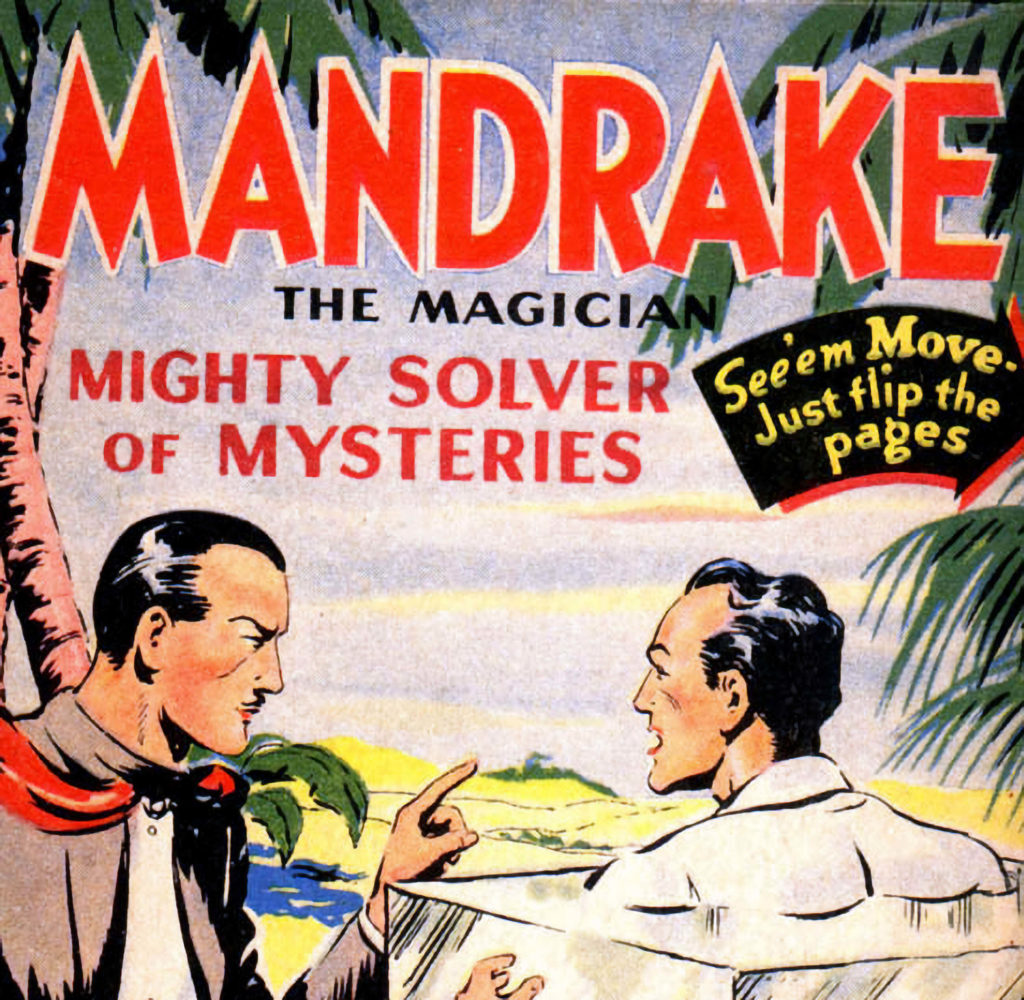
With this comic character, the connection to drugs is much more explicit. Mandrake the Magician is a series of comics created by Lee Falk and Phil Davis in 1934.
Mandrake is an illusionist with a fast and effective hypnotic technique, who fights against criminals and gangsters by making them believe that his arms are snakes or fire-bolts. The name Mandrake is also the name of a plant, also known as Mandragora, and is a genus of the nightshade family.
The roots of the plant have been used for magic rituals throughout the history of humankind. The mandrake plant is very toxic and both mandragora autumnalis and officinarum can penetrate through the skin. Handling these plants risks dizziness, bradycardia and breathing difficulties.
The plant has featured in many legends. Nowadays, when cured it is used as a cooking condiment, and when not cured, as a drug. It contains alkaloids such as atropine and scopolamine, and so used to be widely used as an anaesthetic.
There is no doubt that Mandrake, or non-synthetic drugs, juxtaposes Superman, or synthetic drugs, but is always competing in the same crusade.
4. Batman
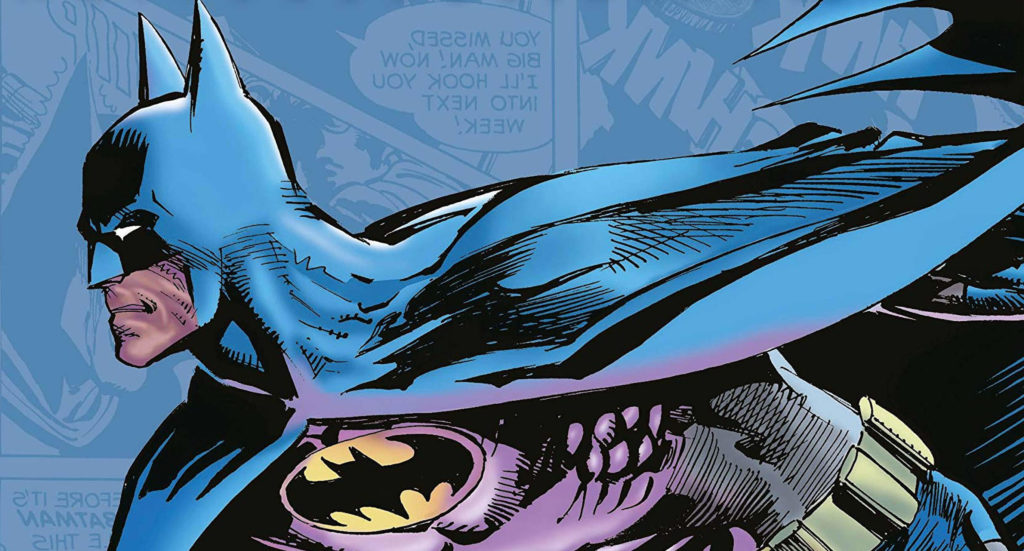
1939 saw the birth of a new superhero created by Bob Kane and Bill Finger: Batman. This character is a philanthropic millionaire, Bruce Wayne, who has incredible abilities as a detective and who disguises himself as a bat to hide his identity.
The most distinctive feature of Batman is that he has no superpowers whatsoever, but rather uses his intelligence to create weapons and tools that help him fight crime.
5. Joker
Several years on, his first archenemy and antagonist, the Joker, enters the mix. Created by Jerry Robinson, the Joker is an intelligent psychopath, twisted and sadistic, who uses a wide range of toxic substances to finish off his victims, killing them with laughter.
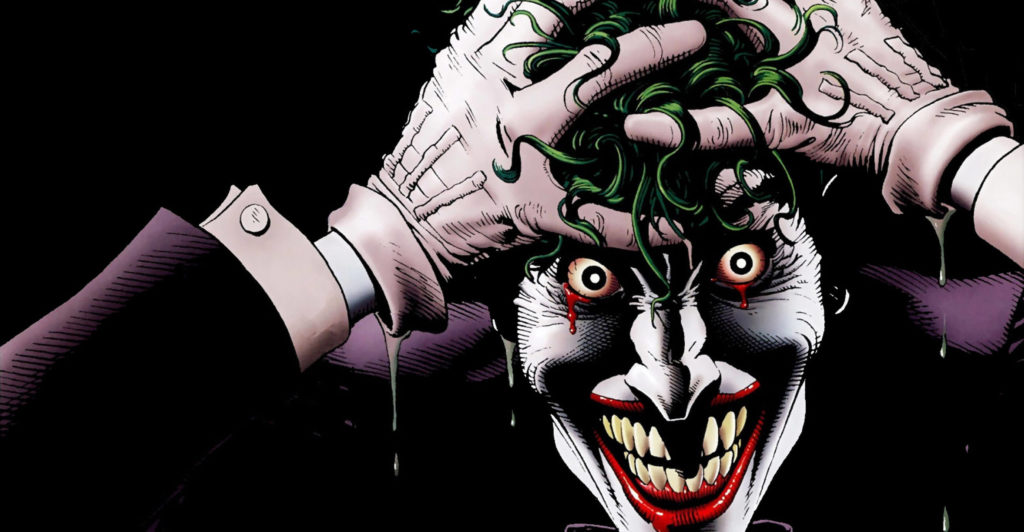
One of his most frequent concoctions is Joker Venom spores which cause anaphylactic shock and leave his victims with a grotesque smile fixed on their face.
The toxic gases used by the Joker might represent the use of drugs as chemical weapons. The Joker is one of the most influential villains in the history of comics, a threat to heroes and villains alike. He is one of the most sinister and dangerous antagonists created in the DC Comics universe.
Start of World War II
During World War II, the superheroes born in the 30s were also called up to military service, becoming instruments of political propaganda. They served to motivate the population in times of conflict.
The two most significant companies in the country, DC Comics and Marvel Comics, had to reorient their subjects and stories, changing from superheroes fighting mafia bosses to starting to combat the Nazis and the Japanese.
6. Captain America
Even before America entered the conflict, Captain America was already flying the flag for anti-Nazi sentiment and patriotism. This was clear from the very first issue, in which the hero was depicted punching Hitler himself. This character, created by Jack Kirby and Joe Simon for Marvel Comics, appears in 1941, a few months after the start of the war.
Captain America’s real name is Steve Rogers, a young man who tries to join the army but is rejected for his weak constitution. His last chance to enter the armed forces is to offer himself up as a volunteer for a government project. This turns him into a super-soldier with above-average strength and intelligence.
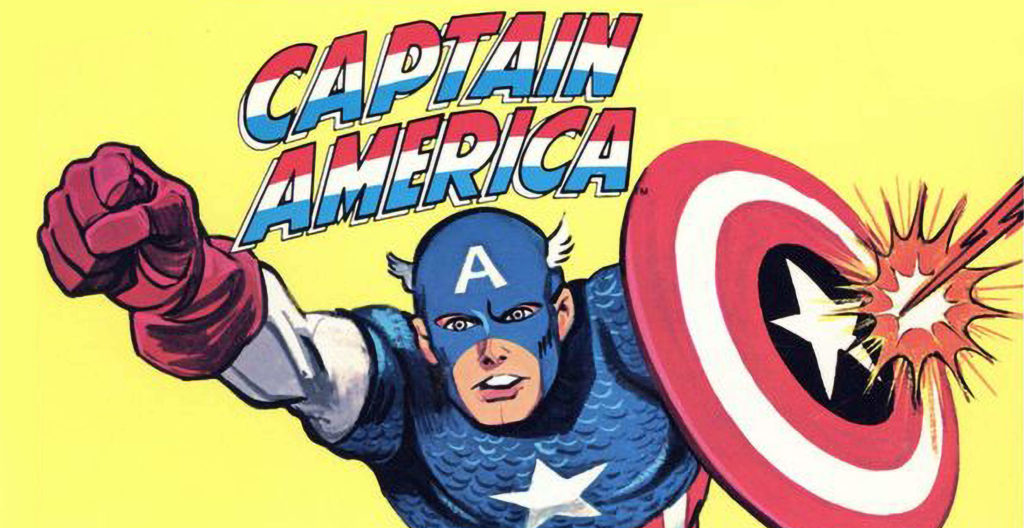
The drug that converts him into a super-soldier is a mysterious serum administered orally and intravenously. This is later combined with ‘Vita-Rays’, which bestow upon him the perfect athlete’s physique. This serum has similarities to what are today known as steroids or anabolic steroids. These are synthetic substances that provoke the growth of skeletal muscle, i.e. anabolism.
These substances were developed towards the end of the 30s and, although neither stupefacient nor psychotropic, in many cases they are used as part of a pattern of abuse. They were used as much for recreational purposes as for aesthetic or competitive purposes.
7. The Scarecrow
The Scarecrow is a supervillain who appears for the first time in the autumn of 1941, penned by Bob Kane and Bill Finger. His alter-ego is Dr Jonathan Crane, a psychology professor with a good knowledge of biochemistry. He turns into a criminal after being sacked for conducting an experiment on the psychology of fear, in which he shot bullets into the air in a class full of students to demonstrate one of his theories.
He uses a series of drugs and psychological tactics to exploit the fears and phobias of his enemies. His scarecrow disguise serves as a tool to instil terror, and he forms part of the gallery of Batman villains.
He does not have superpowers, but he does administer a toxin to his victims, a psychotropic that makes them visualise their greatest fears. They are consequently rendered powerless against his attacks.
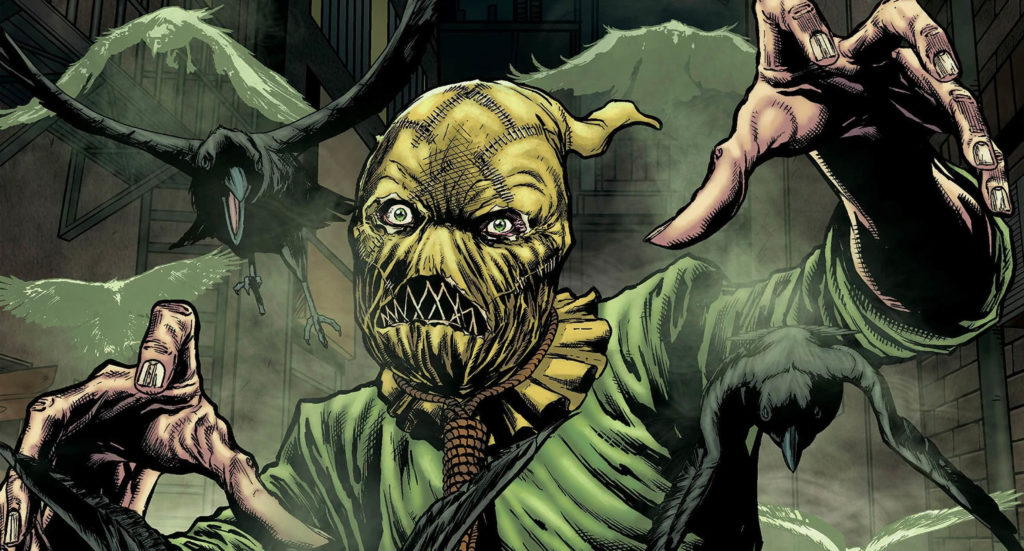
Psychotropic drugs are chemical substances that affect mental processes. These agents affect the central nervous system and can alter anything from conscience, to behaviour, to perception.
The introduction of synthetic hallucinogens began in 1943, when Albert Hofmann experimented with taking LSD (lysergic acid diethylamide, which he himself synthesised for the first time in 1938 when he was studying rye ergot). He was then able to describe its psychological effects.
Fifteen years later in 1958, Hofmann isolated psilocybin and psilocin, the two psychoactive ingredients of the ‘magic mushroom’ Psilocybe Mexicana. From 1948, psychopharmacology began to experience a boom, which continues to this day. It also constituted a change in the treatment of mental patients.
During the 50s, the use of drugs was limited to the marginalised sectors of society. In the States they were considered characteristic of people who lived in ghettos, and jazz musicians. In other words, drugs were consumed by society’s rejects.
In the 60s, the situation changed, and a much wider sector of society contributed to the defence of drugs. Sometimes they were trying to gain higher states of consciousness or an enhanced perception of reality using drugs.
The discovery of new drugs also helped their spread. The investigator R. Gordon Wasson and his photographer, Allan Richardson, were the first foreigners to take hallucinogenic mushrooms in Mexico. Later, Carlos Castaneda would open the way to entheogens for future generations with his anthropological investigations.
8. Spiderman
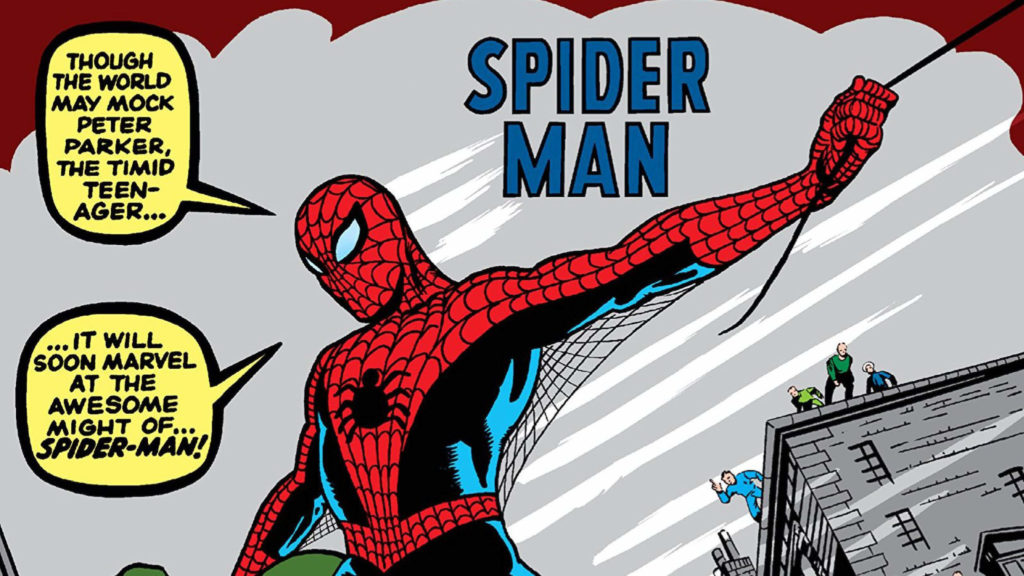
In 1962, Stan Lee, who admitted to regular use of cannabis as an important part of his creative process, and Steve Ditko created one of the most innovative characters in the history of comics. When Spiderman appeared for the first time in the 60s, teenage characters in comics had always been relegated to the role of the hero’s sidekick. Stan Lee broke from that tradition.
Readers could instantly identify with Peter Parker, an intelligent teenager and Spiderman’s alter-ego, because of his shy personality and his seeming inability to fit in with other young people his age. Peter Parker acquires his spider powers after being bitten by a radioactive spider exposed to the drug “OZ”, a steroid injected and absorbed through the skin.
In 1971, the Spiderman comics were the most popular among young people. Because of this, the President of the US Department of Health, Education and Welfare suggested to Stan Lee the idea of publishing a Spiderman comic that warned about the dangers of drugs. Stan Lee accepted and published the trilogy in which drugs appeared, presenting Harry Osborn, Peter Parker’s best friend, as an LSD addict.
9. The Hulk
1962 saw the first appearance of The Hulk, another character created by Lee and Kirby. The scientist Robert Bruce Banner inherited mutant genes from his father, which form the basis of The Hulk’s innate characteristics.
Years later, when Bruce tries out one of his latest inventions, the Gamma Bomb, there is an explosion, and he is fully exposed to radiation. Lethal exposure to the gamma rays in conjunction with the activation of the mutant genes, or nanomeds, make Bruce able to transform himself into The Hulk.
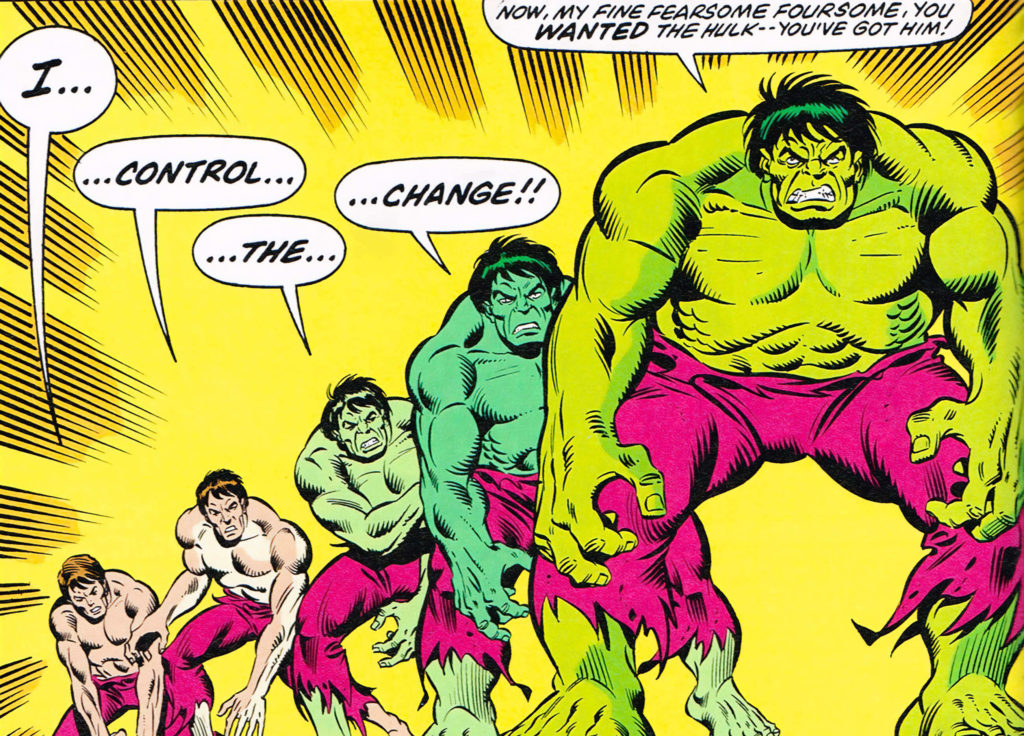
The story of The Incredible Hulk is directly inspired by The Strange Case of Dr Jekyll and Mr Hyde (1886). It explores the dichotomy between Dr Banner’s well-developed intellect and the simple and emotional mind of The Hulk. As in Robert Louis Stevenson’s novel, good and bad co-exist within the same person. The idea for the novel came to Stevenson after a nightmare he had while under the influence of cocaine. He then proceeded to finish the novel in six days.
In the first stories, the transformation occurs only when the moon comes out. However, as the series progresses The Hulk emerges mainly due to fury, excitement, and fear, i.e. states potentially caused by substance abuse.
The Hulk is a monster with superhuman strength. He is continuously persecuted and attacked by the army. Here we find a transformation that can be dangerous, like drug abuse, and with the persecution by law enforcement, similarities with the anti-drug crusade.
10. Daredevil
Daredevil, the Man Without Fear, is one of Marvel’s most popular characters. He was created by Stan Lee and Bill Everett in 1964. Having lost his sight in an accident when he was young, Daredevil’s four remaining senses develop to superhuman levels due to radiation.
Despite his blindness, he uses a kind of radar similar to that used by bats, called echolocation. He has prodigious hearing which allows him to detect whether people are telling the truth or lying by listening for variations in their heartbeat. His sense of touch is acute, and he also possesses superhuman strength. When he combines his sense of touch with echolocation, he turns his club into a terrible weapon.
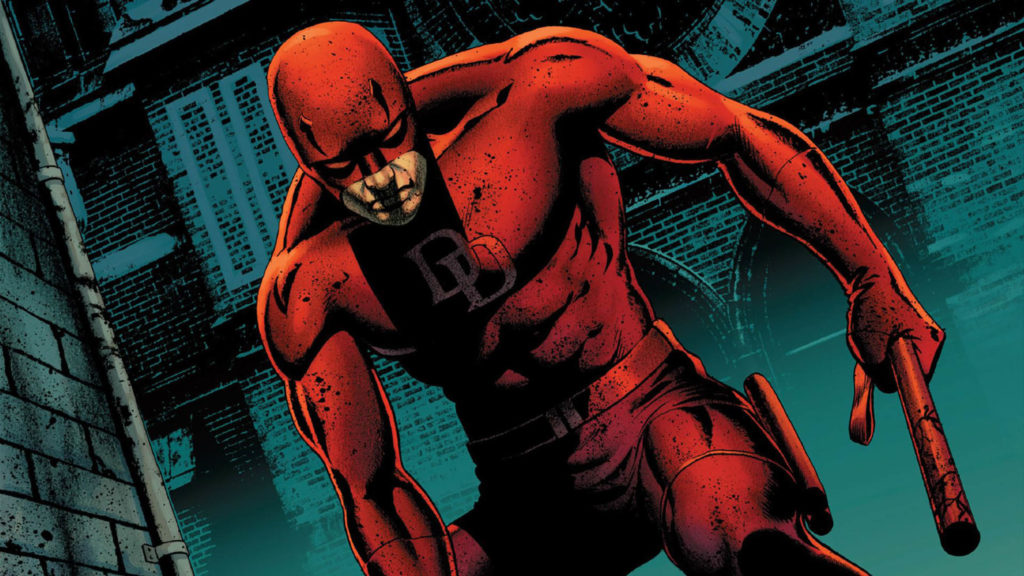
Each of these characteristics are reminiscent of the experience of consuming psychedelic substances. Psychedelic drugs started to be investigated in 1897 when the German chemist Arthur Heffter managed to isolate mescaline, the psychoactive substance of peyote and a psychotropic. The main effect of this is to alter the brain’s mental processes and the mind’s perception. This means that psychedelic drugs can help access and develop the untapped potential of the human mind.
Psychedelic drugs reached their pinnacle of popularity in the decade of the 1960s and the beginning of the 70s. Drugs such as LSD were central to the ‘hippie’ subculture in Western Europe and the United States.
11. The X-Men
The X-Men are a team of superheroes from the Marvel universe created, once again, by Lee and Kirby in 1963. The story now sees a disabled character: Charles Xavier, a man trapped in a wheelchair but with an extremely powerful mind; a mutant with extraordinary telepathic abilities. A mutant is an organism (generally human) that possesses a genetic feature called ‘Gen-X’. This enables the mutant to naturally develop superhuman powers and abilities.
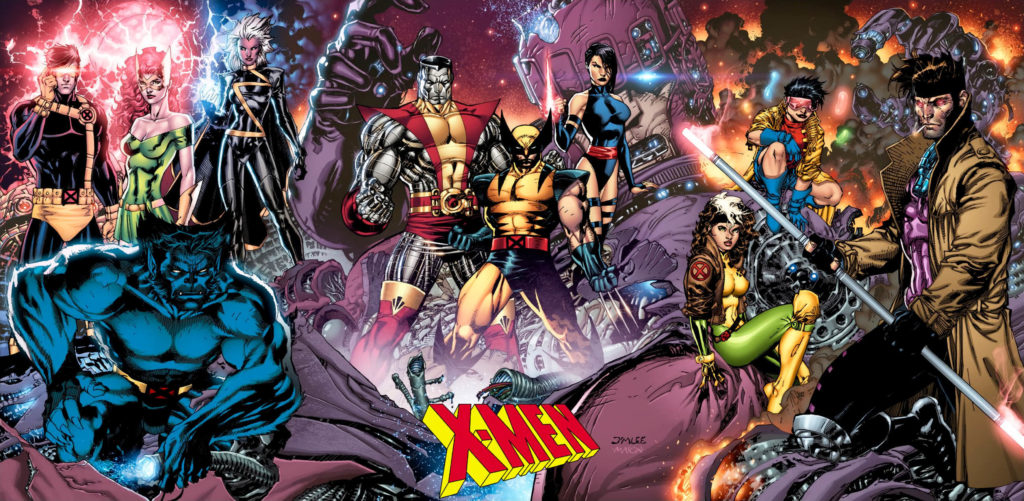
Charles Xavier creates a School for Gifted Youngsters which serves as a smokescreen to keep their identities secret. Society views them with fear and hatred and attacks them with violence. These characters represent the discriminated minorities in the United States. Digging deeper, Xavier’s “dream” could be a reference to Martin Luther King’s famous “I have a dream” speech.
In this case, we are not talking about the appearance of one or various specific substances in the X-Men stories. Instead it is important to comment on how hard drugs such as opiates, which were consumed to a lesser degree than soft drugs at the time, play an important role in the countercultural movements of the time.
12. The Black Panther
During this period, the Black community were associated with the use and trafficking of heroin. In 1967 in Detroit members of the Black Panther Party accused several heroin traffickers of selling the drug to members of its organisation. The Black Panther Party fought against drug trafficking in deprived neighbourhoods. They believed heroin demoralised people more on a social level, than poverty itself.
It was discovered that some of the traffickers selling the drugs to the Black population were undercover FBI agents. These agents participated in a strategic operation against the Black Panthers with the aim of depoliticising the social movement of the African American population.
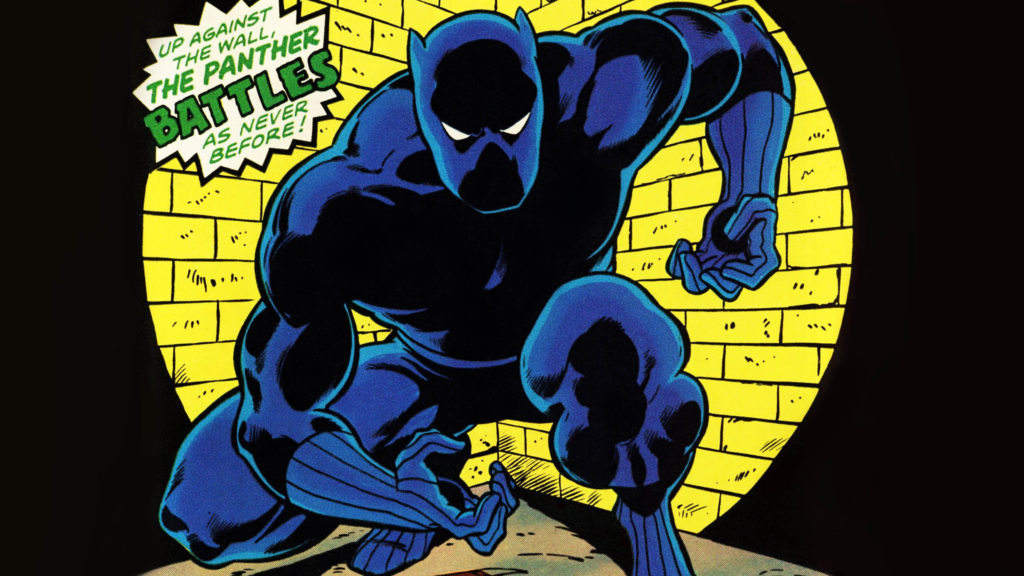
In 1966, The Black Panther appears. The Black Panther is a Marvel superhero, created by Stan Lee and Jack Kirby, first appearing in the pages of issue 52 of the Fantastic Four. This was the first Black superhero in the history of comics and the character was actually created prior to the Black Panther party, which was founded in October of that same year. As time has gone on, the number of Black comic characters has continued to increase.
Modern day
Now to 2021, and we have skipped several decades and many other comic characters that have emerged, but sadly the War on Drugs continues to this day. It is a losing battle that requires new policies.
The use of substances cannot be halted by force. The nature and history of human behaviour and the therapeutic basis of medical science all need to be taken into consideration.
Nowadays in the 21st century, the comics industry continues to fight to gain the status it deserves. It does so with the support of its loyal fans, more numerous than people would think. Those who think that comics are only books with pictures are sorely mistaken and we hope that this article has helped raise awareness of that.
Are there any comic book characters we have missed out that you think deserve a mention? Let us know in the comments below!






